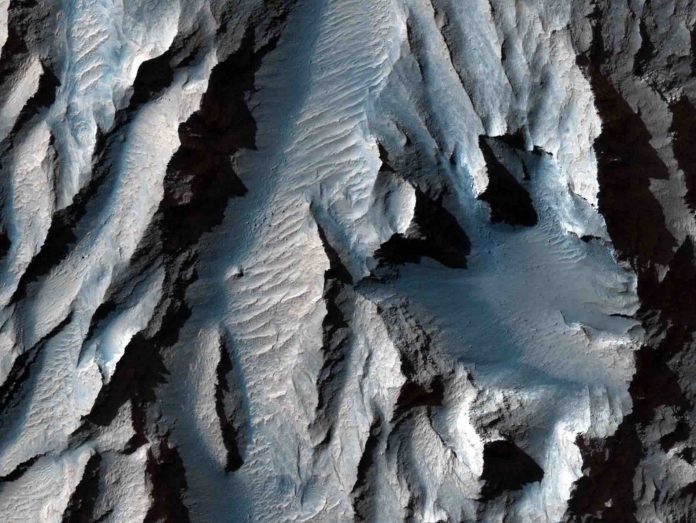NASA/JPL and the University of Arizona released these glorious new images of the largest canyon in the solar system: Valles Marineris on Mars. At more than 4,000km long and 7km deep, the system of canyons is almost 10 times longer and three times deeper than Earth’s Grand Canyon. The images were captured by the ultra-high resolution camera, HiRISE (High Resolution Imaging Science Experiment), on the Mars Reconnaissance Orbiter. From Space.com:
Unlike Earth’s Grand Canyon, Valles Marineris probably wasn’t carved out by billions of years of rushing water; the Red Planet is too hot and dry to have ever accommodated a river large enough to slash through the crust like that — however, European Space Agency (ESA) researchers have said, there is evidence that flowing water may have deepened some of the canyon’s existing channels hundreds of millions of years ago.
A majority of the canyon probably cracked open billions of years earlier, when a nearby super-group of volcanoes known as the Tharsis region was first thrusting out of the Martian soil, the ESA said. As magma bubbled up beneath these monster volcanoes (which include Olympus Mons, the largest volcano in the solar system), the planet’s crust easily could have stretched, ripped and finally collapsed into the troughs and valleys that make up Valles Marineris today, according to the ESA.








